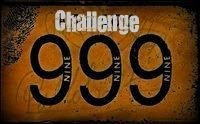
In the mountains of western North Carolina, in the 1930s, Velva Jean Hart lives with her extended family in a community rich in folk tradition and seemingly isolated from the outside world. Velva Jean Dreams of one day going to Nashville to sing at the Grand Ole Opry. But Velva Jean's community is not one that people tend to leave. Velva Jean is limited by her age and family situation. With her mother dead and father run off, she is left to the restrictions of her older sister. With age and marriage Velva Jean's dreams of Nashville fade, but she gains a new desire- to learn to drive. This novel follows Velva Jean from childhood into young adulthood. At every turn it seems that Velva Jean is forced to push her dreams aside. Her story is set in Appalachia during the Depression, and we also see the first signs of outside intrusion into these previously cloistered communities. The Blue Ridge Parkway is about to be cut through the mountains. Even if it does not cut through their village, the new road will affect the lives of all around it. This was an engaging book, with a complex plot line and characters. A wonderful read.
Jennifer Niven, Velva Jean Learns to Drive (Plume, 2009) ISBN: 0452289459
Category: Published in 2009, 4/9, 26/81




